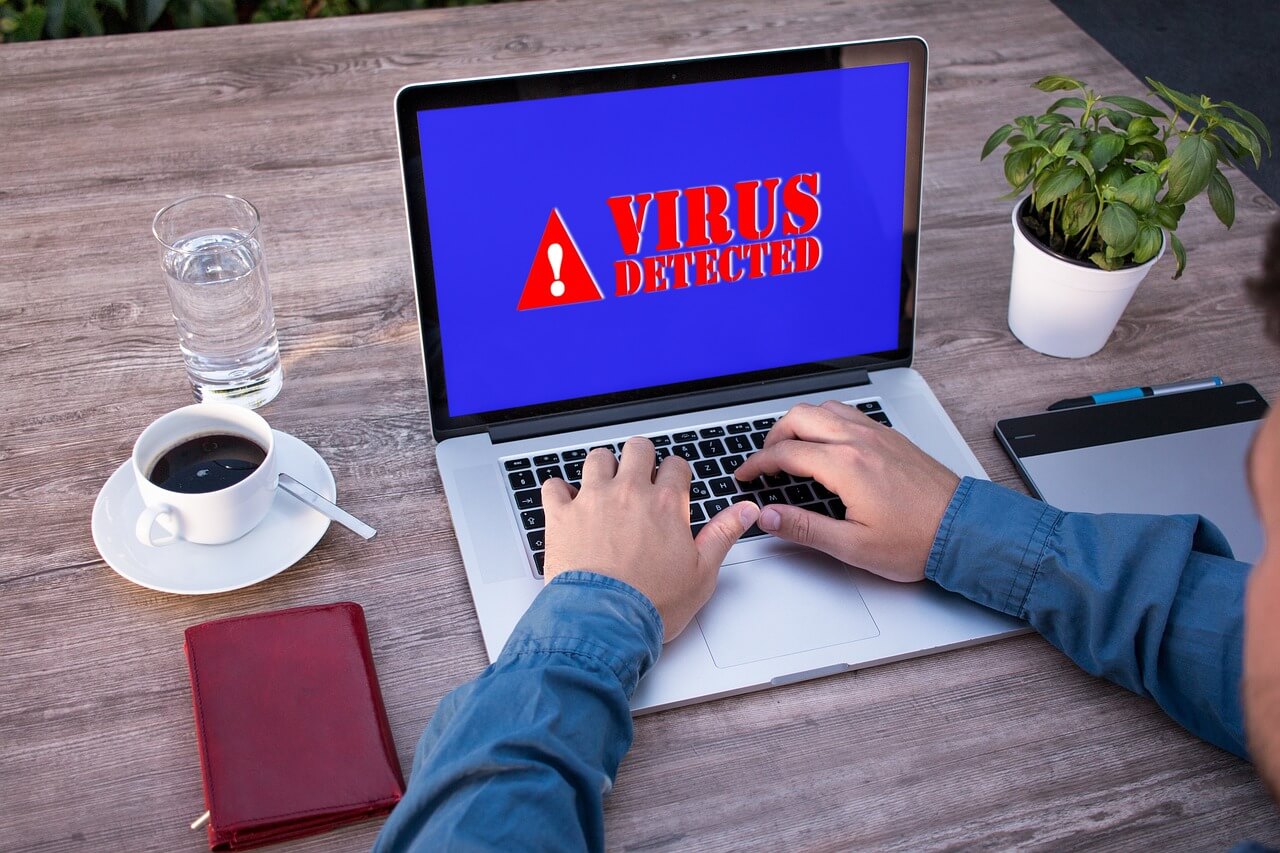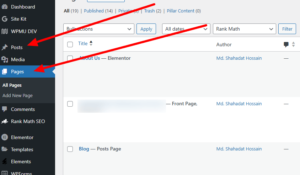To remove malware from WordPress, install a security plugin and perform a thorough scan. Follow up by deleting any infected files.
Malware infections can compromise your WordPress site’s security and performance. Swift action is crucial to prevent further damage. Security plugins like Wordfence or Sucuri offer robust scanning and removal tools. Regularly updating your WordPress core, themes, and plugins enhances your site’s security.
Always backup your site before making any changes. Strong passwords and limited login attempts can also thwart potential attacks. Consider professional help if malware persists. Regular maintenance and vigilance are essential for a secure WordPress site. Stay proactive to safeguard your online presence.
Signs Of Malware
WordPress is a popular platform, but it can become a target for malware attacks. Recognizing the signs of malware is crucial to keeping your site safe. Knowing these signs helps you take quick action to remove malware and protect your data.
Unusual Site Behavior
Malware often causes strange activities on your WordPress site. Unusual site behavior can include:
- Unexpected pop-ups
- Random redirects to unknown websites
- Unfamiliar ads appearing on your site
If you notice any of these issues, it might indicate malware. Another sign is if your admin dashboard starts showing unknown users or strange content.
Check for:
- New users added without your permission
- Posts or pages you did not create
- Changes to your site’s appearance
Sometimes, malware can alter your website’s code. This makes it look different or function improperly. These changes might be subtle, like small design tweaks, or more obvious, like entire sections missing.
Slow Performance
Malware can make your site slow. Slow performance is a common sign of an infected WordPress site. The malware might be using your server’s resources, causing:
- Longer page load times
- Slow response from the server
- Frequent timeouts
Visitors may notice these slowdowns, which can affect your site’s reputation. Search engines also penalize slow websites, impacting your SEO rankings.
You can use tools like Google PageSpeed Insights to check your site’s speed. If you see a sudden drop in performance, it’s time to investigate for malware. Regular monitoring of your site’s speed can help you catch these issues early.
Look for:
- Unusually high server usage
- Increased bandwidth consumption
- Unexpected spikes in traffic
These can all be signs of malware. By recognizing these symptoms, you can take steps to remove the malware and restore your site’s performance.
Backup Your Site
Removing malware from WordPress is crucial for website security. To ensure you don’t lose any data, always backup your site. Backups protect your content and settings. They are the first step before tackling malware removal.
Database Backup
Backing up your database is vital. The database holds all your posts, comments, and settings. Without it, restoring your site is hard.
Follow these steps to backup your database:
- Log in to your hosting account.
- Go to cPanel and find phpMyAdmin.
- Select your WordPress database.
- Click on the Export tab.
- Choose Quick Export and click Go.
Save the file on your computer. This file is your backup. You can also use plugins like UpdraftPlus or BackupBuddy. These plugins automate the process. They save time and reduce errors.
Here is a comparison of popular backup plugins:
| Plugin | Free Version | Automatic Backup | Cloud Storage |
|---|---|---|---|
| UpdraftPlus | Yes | Yes | Yes |
| BackupBuddy | No | Yes | Yes |
| BackWPup | Yes | Yes | Yes |
File Backup
Backing up your files is just as important. Your files include themes, plugins, and media. These files are essential for your site’s look and functionality.
Here are the steps to backup your files:
- Log in to your hosting account.
- Go to cPanel and find File Manager.
- Locate your public_html or www directory.
- Select all files and click on Compress.
- Choose ZIP Archive and click Compress Files.
- Download the ZIP file to your computer.
You can also use plugins for file backups. Duplicator and WP Time Capsule are good options. They simplify the process and ensure consistency.
Here is a comparison of popular file backup plugins:
| Plugin | Free Version | Automatic Backup | Cloud Storage |
|---|---|---|---|
| Duplicator | Yes | Yes | Yes |
| WP Time Capsule | No | Yes | Yes |
| All-in-One WP Migration | Yes | Yes | Yes |
Regularly backup your files. This practice keeps your site safe and secure. If malware strikes, you can quickly restore your site.
Scan For Malware
Keeping your WordPress site secure is crucial. Malware can harm your site and your visitors. One of the best ways to protect your site is to regularly scan for malware. This helps you find and remove any malicious code before it causes damage.
Use Security Plugins
Using security plugins is a simple way to scan for malware. These plugins are designed to detect and remove threats. Here are some popular security plugins you can use:
- Wordfence Security: This plugin offers a comprehensive security solution. It includes a malware scanner that checks core files, themes, and plugins. It also provides real-time threat defense.
- Sucuri Security: Sucuri monitors your site for malware and other security issues. It also includes an option to clean up your site if it gets infected.
- iThemes Security: This plugin focuses on strengthening your site’s security. It includes a malware scanner and other features to protect your site.
To use a security plugin, follow these steps:
- Go to the WordPress dashboard.
- Navigate to Plugins and click on Add New.
- Search for the plugin you want to install.
- Click Install Now and then Activate.
- Configure the plugin settings to start scanning for malware.
Security plugins not only scan for malware but also offer other security features. These can include firewall protection, login security, and regular security reports. Using a plugin is an easy and effective way to keep your WordPress site safe.
Manual Inspection
Manual inspection involves checking your site’s files and database for signs of malware. This method requires more technical knowledge, but it can be very effective. Here’s how you can do it:
1. Check Your File System
- Use an FTP client to access your WordPress files.
- Look for any files that you don’t recognize. Malware often hides in unusual files.
- Pay special attention to the
wp-contentdirectory. This is where most malicious files are found.
- Access your database using a tool like phpMyAdmin.
- Look for unusual entries in your database tables. Hackers often inject malicious code into your database.
- Check the
wp_optionstable for suspicious values.
3. Inspect Your .htaccess File
- This file controls many aspects of your site. Malware often targets it.
- Look for any code that you didn’t add. It could be a sign of malware.
Manual inspection can help you find malware that security plugins might miss. It gives you a deeper understanding of your site’s health. Combining manual inspection with security plugins offers the best protection for your WordPress site.
Remove Infected Files
Removing malware from WordPress is essential to maintain your website’s security and performance. One critical step in this process is to remove infected files. Malware can hide in various files, causing harm to your site and visitors. Let’s dive into how to identify and remove these suspicious files effectively.
Identify Suspicious Files
Identifying suspicious files is the first step in cleaning your WordPress site. Look for files that have been recently modified. These files might have unusual names or extensions. Use a malware scanner plugin like Wordfence or Sucuri to detect these files. These tools provide a detailed report of infected files.
Check for:
- Unknown PHP files in your themes or plugins directory.
- Files with unusual names or extensions like .bak or .tmp.
- Large files that seem out of place.
- Files with recent modification dates you don’t recognize.
Here’s a table to help you understand what to look for:
| File Type | Suspicious Signs |
|---|---|
| PHP | Unknown, large size, recent changes |
| JavaScript | Obfuscated code, unusual names |
| HTML | Embedded iframes, hidden scripts |
Delete Or Replace
Once you’ve identified the suspicious files, the next step is to delete or replace them. Always backup your site before making any changes. For files you are unsure about, compare them with original files from a fresh WordPress installation.
Steps to delete or replace files:
- Backup your WordPress site.
- Use an FTP client like FileZilla to access your site files.
- Navigate to the folder containing the suspicious files.
- Delete the infected files.
- Replace them with clean copies from a fresh WordPress installation.
Here’s a quick checklist:
- Backup site
- Access via FTP
- Locate suspicious files
- Delete or replace
By following these steps, you can ensure your WordPress site remains secure and free from malware.
Update WordPress
Keeping your WordPress site free from malware is essential. One effective strategy is to ensure your WordPress installation is always up to date. Updating WordPress can significantly reduce security vulnerabilities. Let’s explore how to manage these updates effectively.
Core Updates
WordPress core updates are vital. The WordPress team frequently releases updates to fix security issues and improve performance. To update your WordPress core, follow these simple steps:
- Log into your WordPress admin dashboard.
- Navigate to the Dashboard menu and click on Updates.
- If an update is available, you will see a notification. Click the Update Now button.
Updating the core ensures your site has the latest security patches and features. Older versions might have known vulnerabilities that hackers can exploit.
Here’s a quick comparison table to understand the benefits of updating:
| Old Version | Latest Version |
|---|---|
| Known vulnerabilities | Security patches applied |
| Outdated features | New and improved features |
| Slower performance | Optimized performance |
Always back up your site before updating. This ensures you can restore it if something goes wrong. Use a reliable backup plugin to make the process easier.
Plugin And Theme Updates
Plugins and themes are essential for your site’s functionality and appearance. Keeping them updated is equally important. Outdated plugins and themes can be a gateway for malware.
To update plugins, follow these steps:
- Go to your WordPress admin dashboard.
- Click on Plugins in the left-hand menu.
- Under each plugin, you will see an Update Now link if an update is available. Click it to update.
Similarly, for themes:
- Navigate to Appearance in the dashboard menu.
- Click on Themes.
- If an update is available, you will see an Update Now button. Click it to proceed.
Consider using the Easy Updates Manager plugin to automate updates. This plugin allows you to manage core, plugin, and theme updates from one place.
Here are the benefits of keeping plugins and themes updated:
- Enhanced security: New updates fix known vulnerabilities.
- Improved performance: Updates often include optimizations.
- New features: Enjoy the latest features and improvements.
Regularly check for updates to keep your site secure and running smoothly. An updated WordPress installation is your first line of defense against malware.
Change Passwords
Malware can damage your WordPress site and steal sensitive data. One of the first steps to remove malware from your WordPress site is to change all your passwords. This includes the admin password and the database password. Changing passwords blocks unauthorized access and protects your site from further harm.
Admin Password
Changing your admin password is crucial. Hackers often target admin accounts to gain control of your site. Use a strong password to secure your site. Follow these steps to change your admin password:
- Log in to your WordPress dashboard.
- Go to Users and select Your Profile.
- Scroll down to the Account Management section.
- Click on Generate Password.
- WordPress will suggest a strong password. You can use it or create your own.
- Click Update Profile to save changes.
Ensure your new password is unique and strong. A strong password includes:
- At least 12 characters
- A mix of letters (uppercase and lowercase)
- Numbers and special characters
Here is an example of a strong password:
3X@mpl3P@$$w0rd!Database Password
The database password is just as important as the admin password. Hackers can access your site’s data if they get hold of your database password. Follow these steps to change your database password:
- Log in to your hosting control panel (cPanel).
- Navigate to the Databases section.
- Select MySQL Databases.
- Find your database user and click on Change Password.
- Enter a new strong password.
- Click Change Password to save it.
Update your wp-config.php file with the new password:
define('DB_PASSWORD', 'your_new_password');Ensure your new password is strong. Use a mix of letters, numbers, and special characters. Here is an example:
4N0th3r$tr0ngP@$$Changing your database password secures your site’s data and keeps hackers at bay.
Harden Security
Keeping your WordPress site free from malware is essential. One effective way to do this is by hardening your site’s security. This process makes it more difficult for hackers to penetrate your system. Focus on key areas to ensure your site remains secure and your data stays protected.
Install Security Plugins
Security plugins add an extra layer of protection to your WordPress site. These plugins help detect and remove malware, block suspicious activities, and provide various other security features. Here are some key plugins to consider:
- Wordfence Security: Offers firewall protection, malware scanning, and live traffic monitoring.
- Sucuri Security: Provides security activity auditing, malware scanning, and security hardening.
- iThemes Security: Focuses on identifying and fixing common security holes in your site.
Installing and configuring these plugins can greatly enhance your site’s security. Here is a table summarizing the features of these plugins:
| Plugin | Key Features | Price |
|---|---|---|
| Wordfence Security | Firewall, Malware Scanning, Traffic Monitoring | Free/Premium |
| Sucuri Security | Activity Auditing, Malware Scanning, Hardening | Free/Premium |
| iThemes Security | Security Hole Fixing, Malware Scanning | Free/Premium |
Installing these plugins is straightforward. Navigate to the Plugins section in your WordPress dashboard, click Add New, search for the plugin, and click Install Now. Once installed, activate the plugin and configure its settings to suit your needs.
Implement Two-factor Authentication
Two-Factor Authentication (2FA) adds an extra layer of security to your login process. It ensures that even if someone gets hold of your password, they still can’t access your account without a second form of verification. Here’s how to set it up:
- Install a 2FA Plugin: Some popular options include Google Authenticator and Authy.
- Activate the Plugin: Once installed, go to the plugin’s settings and activate it.
- Configure Your 2FA Settings: Choose the method of verification, such as SMS, email, or an authenticator app.
Using 2FA greatly reduces the risk of unauthorized access to your site. It’s easy to set up and provides an additional layer of security that hackers find difficult to bypass. Here’s a quick comparison of popular 2FA methods:
| Method | Pros | Cons |
|---|---|---|
| SMS | Easy to use, No additional app needed | Can be intercepted, Requires phone signal |
| Authenticator App | More secure, Works offline | Requires smartphone, Setup can be complex |
| Easy to use, No additional app needed | Less secure, Relies on email security |
Implementing 2FA is a crucial step in hardening your WordPress security. It makes it much harder for attackers to gain access, ensuring your site remains safe and secure.
Monitor Site Health
Removing malware from WordPress is crucial for site security. One effective way to ensure your site remains malware-free is to monitor site health. Regular monitoring helps detect issues early, preventing significant damage. Monitoring involves regular scans and checking user accounts.
Regular Scans
Regular scans are essential for keeping your WordPress site safe from malware. They help detect and remove threats before they cause harm. Several tools can assist with regular scans:
- Wordfence Security: Offers real-time protection and regular scans.
- Sucuri Security: Provides comprehensive site monitoring and malware removal.
- MalCare Security: Known for its deep scanning capabilities.
Set up automatic scans to run daily or weekly. This ensures any new malware is caught quickly. Here’s a simple table to help you schedule scans:
| Scan Frequency | Tools |
|---|---|
| Daily | Wordfence, Sucuri |
| Weekly | MalCare, iThemes Security |
Ensure that scan reports are sent to your email. This way, you can act promptly on any threats detected. Regular scans are a proactive measure to maintain site health and security.
Check User Accounts
Check user accounts regularly to ensure no unauthorized access has occurred. Malicious users can compromise your site’s security. Here are steps to manage user accounts:
- Review user roles: Ensure each user has the correct role.
- Remove inactive users: Delete accounts not used for an extended period.
- Check login activity: Monitor unusual login times or locations.
Use plugins like WP Activity Log to track changes made by users. This helps identify suspicious activities. Here’s a quick checklist for user account monitoring:
- Verify user roles monthly.
- Delete inactive accounts bi-monthly.
- Monitor login activity weekly.
Implementing a strong password policy is also crucial. Encourage users to use unique, strong passwords. Regularly checking user accounts helps maintain the integrity and security of your WordPress site.
Conclusion
Removing malware from your WordPress site is crucial for security. Regular scans and updates help maintain site health. Use trusted plugins and backup your data frequently. Stay vigilant and follow best practices to keep your website safe. Protect your site and enjoy a secure, seamless experience for your visitors.
Checkout this page if you want pro help to remove malware from your site.






